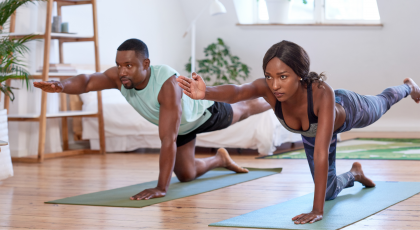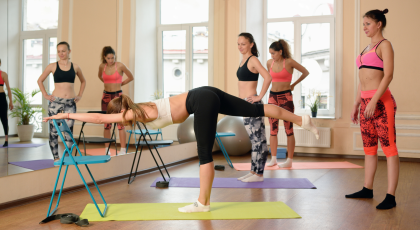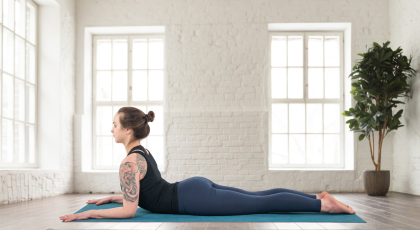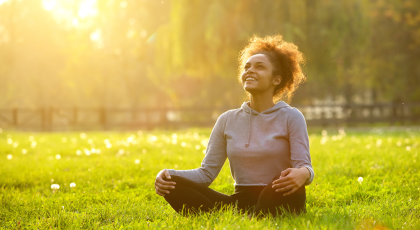View basket (0 items $0.00)
Error message
- Notice: unserialize(): Error at offset 5 of 154 bytes in variable_initialize() (line 1202 of /home/dh_6hcdc2/yogau.online/docroot/includes/bootstrap.inc).
- The file could not be created.
- The file could not be created.
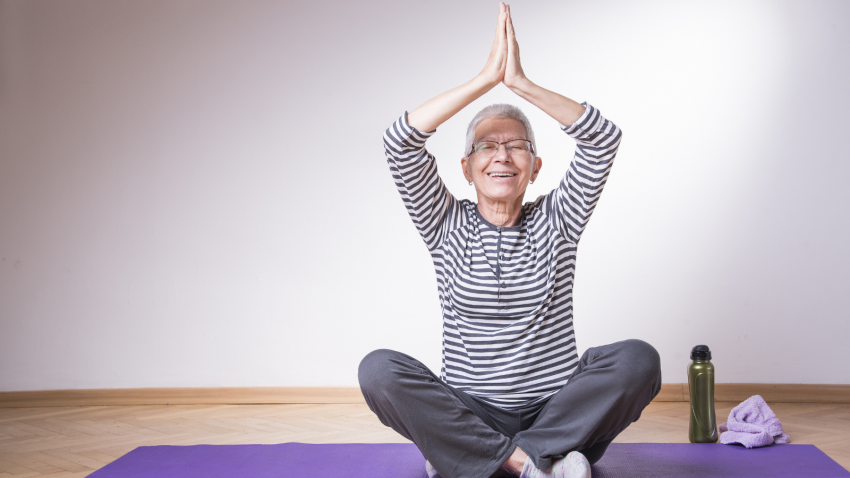
Tension Headaches: A 30-Minute Yoga Practice to Help Relieve Symptoms
If you are among the 80 percent of American adults who have experienced a tension headache, then you are likely aware of how they can impair productivity and decrease overall quality of life. Can yoga ease the symptoms of tension headaches and prevent them from arising in the future? This article explores the science that supports using yoga as a complementary healing tool for tension headaches.
What are the Symptoms of Tension Headaches?
Tension headaches, otherwise known as stress headaches, are characterized by dull tightness, pressure, or a squeezing sensation that may be felt at the forehead, the back of the head, and the neck. These headaches may last from 30 minutes to several days at a time, and they can be characterized as episodic if they occur fewer than 15 days per month, or chronic if they occur more than 15 days per month. In addition to pain or pressure in the head, symptoms include fatigue, irritability, difficulty focusing, muscle tension, insomnia, and mild sensitivity to light or sound.
What Causes Tension Headaches?
Tension headaches may be triggered by a variety of factors, including alcohol consumption, physical or mental overexertion, caffeine overconsumption or withdrawal, and teeth grinding. However, the most common trigger for tension headaches is stress. One study of 5,159 adults published in Cephalalgia found clear evidence of the association between intensity of stress and frequency of tension headaches (1).
Researchers theorize that stress causes muscles in the neck and in the back of the scalp to tighten, which leads to the sensation of pressure felt in tension headaches. Episodic tension headaches are often triggered by an isolated stressful situation or event, whereas chronic tension headaches may be the product of a buildup of daily stress.
Spending excessive time at computers is another likely culprit in many tension headaches, as eye strain from computers and overwork are both known triggers. Additionally, the slumped posture that we commonly assume when working on computers may be linked to tension headaches. Forward-head posture, in which the neck protracts and flexes to bring the head forward of the shoulders, may be a habit that we develop from texting or working at a computer.
Moreover, researchers have found that forward-head posture is more exaggerated in individuals who experience tension headaches than in those who don’t (2). Forward head posture is theorized to cause tension headaches because it over activates the nerves of the neck, leading to sensitivity in the muscles of the neck (3).
How Can Yoga Help Alleviate Tension Headaches?
Empirical evidence is beginning to show that yoga may help with treatment and prevention for tension headaches. For example, a systematic review of randomized controlled trials (RCT) found that one RCT supported yoga exercises as a treatment for tension headaches (4). However, the authors state that their results should be interpreted with caution as there have been very few high-quality RCTs conducted to explore yoga’s efficacy in alleviating headaches.
A more recent study followed 68 patients with chronic headaches as they enrolled in a 12-week yoga therapy program (5). Researchers found that the patients who participated in yoga therapy had a significantly shorter duration and lesser intensity of headaches at 12 weeks compared to baseline, which provides further preliminary evidence for yoga as a clinically useful treatment for tension headaches.
It is possible that yoga may impact tension headaches through three primary mechanisms:
-
By facilitating relaxation of the muscles and the mind
-
By improving posture
-
By strengthening muscles in the neck, shoulders, and back, which may become weak from spending excessive time working at a computer.
Additionally, one study found that a 30-minute massage on cervical trigger points improved the psychological and physiological state of patients with tension headaches at 24-hours post-massage compared to baseline (6). Thus, including self-massage in your yoga practice may also be an effective strategy to relieve muscular tension experienced in tension headaches.
How to Practice Yoga for Tension Headaches
To relax tight, tender muscles in the neck, back, shoulders, and jaw, these areas should be targeted in yoga practices designed to relieve tension headaches. Try the following 30-minute sequence:
Nadi Shodhana (Alternate Nostril Breathing)

Any postures or practices that ease the mind may be worthwhile to include when sequencing for a tension headache. Alternate nostril breathing is a breathing technique that many yoga practitioners find to be soothing and grounding.
-
To practice Alternate Nostril Breathing, begin in a sitting position that you can sustain for about five minutes.
-
Seal off your right nostril with your right thumb as you inhale through your left nostril.
-
Next, seal off your left nostril with your right ring finger as you exhale through your right nostril.
-
Keeping the left nostril sealed, inhale through your right nostril. To complete the first cycle, seal off your right nostril as you exhale through your left nostril.
-
Repeat this pattern of breathing for six to eight more cycles before lowering your hand to your lap and taking a few normal breaths in and out through both nostrils.
Half-Circles of the Neck

-
Staying seated, begin half-circles of the neck by drawing your chin to your chest.
-
After pausing for about five seconds, draw your right ear to your right shoulder and take another brief pause.
-
Then, roll your chin back through the center before drawing your left ear to your left shoulder. Pause for a moment here.
-
Repeat 3 to 5 more half-circles of the neck, pausing at any spot that needs extra attention.
Cow/Cat Poses (Bitilasana and Marjaryasana)
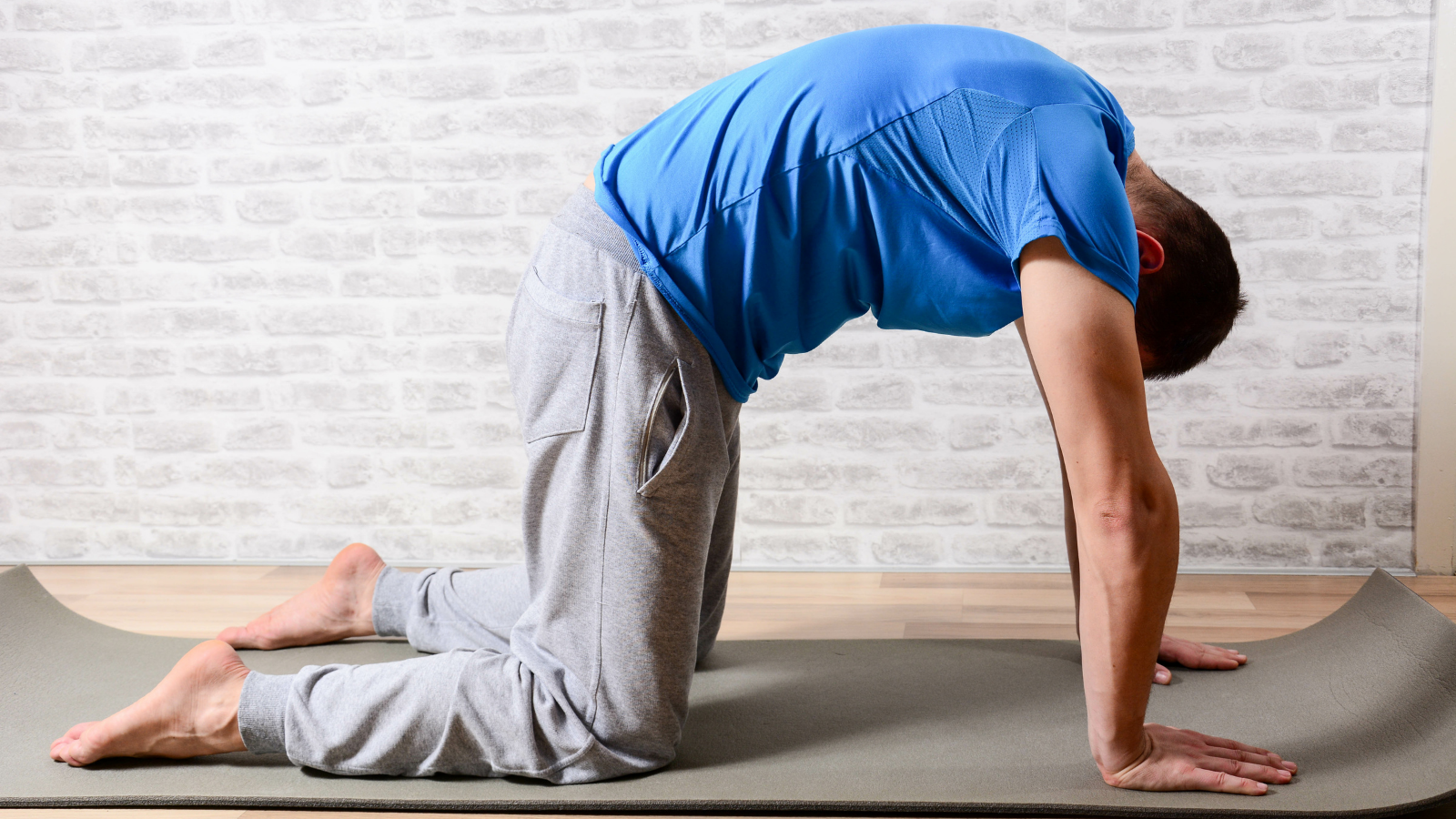
-
Come to your hands and knees, to Tabletop Pose (Bharmanasana), with your wrists stacked underneath your shoulders and your knees stacked underneath your hips.
-
From Tabletop, take an inhalation as you come into Cow Pose by drawing your shoulder blades inward, spreading across your collarbones, and tilting your sitz bones toward the ceiling.
-
From Cow Pose, exhale as you come into Cat Pose by spreading across your shoulder blades, hugging your navel toward your spine, and drawing your pubic bone toward your navel.
-
Repeat 8 to 10 more rounds of Cow and Cat, focusing specifically on the shoulders as you bring movement to the body.
Mountain Pose (Tadasana) at the Wall
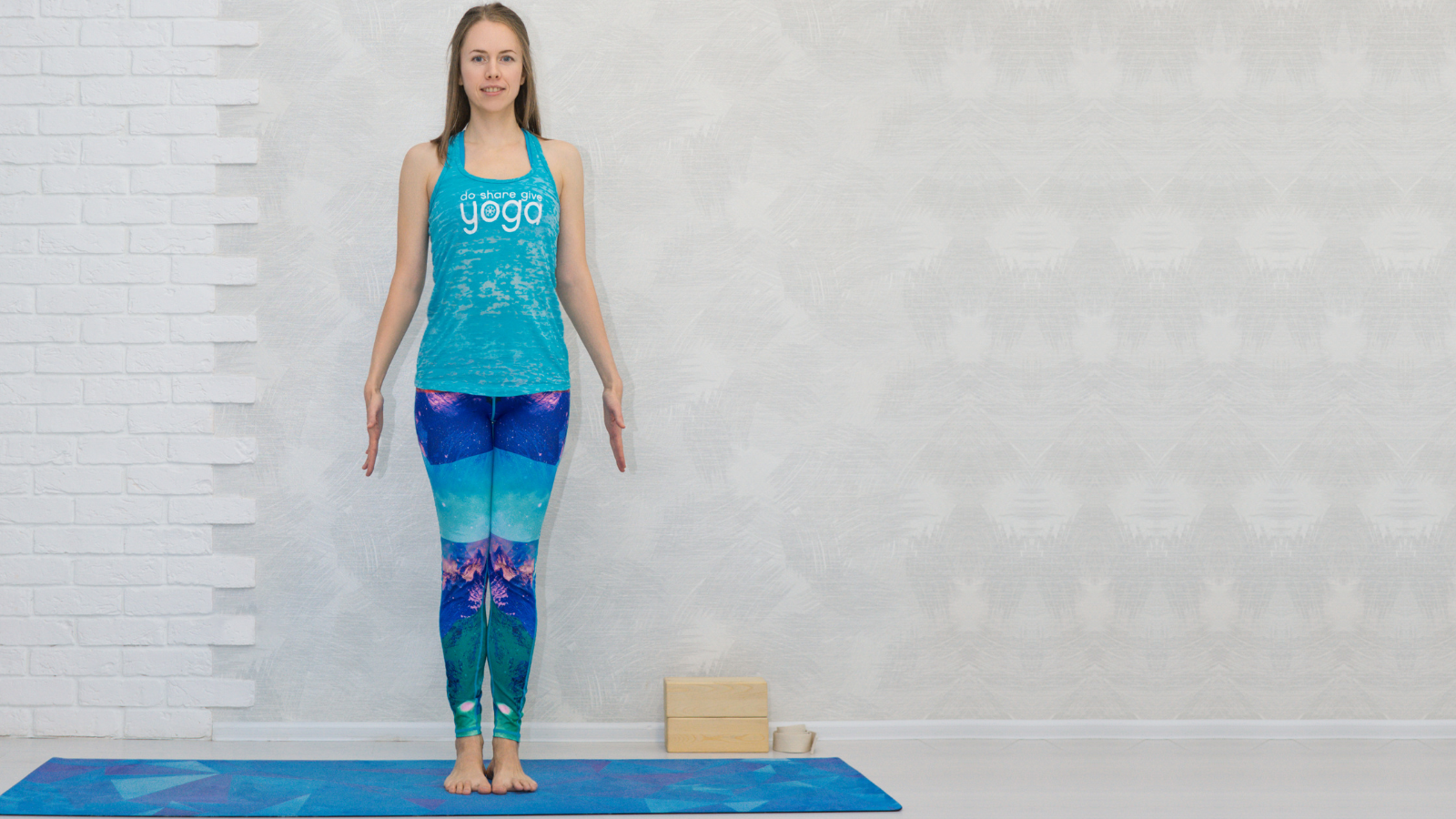
Yoga practices for tension headache relief may also focus on correcting forward-head posture. Mountain Pose at the wall could be an effective way of ensuring that the head is aligned over the shoulders.
-
To come into Mountain Pose, face away from the wall, and walk your heels backward until they ground firmly into the wall.
-
Feel each bone in your body stacking one on top of the other as the back of your pelvis, your shoulder blades, and the back of your skull touch the wall.
-
Pause in Mountain Pose for 6 breaths, noticing how this alignment feels in your body.
Plank Pose (Phalakasana)

After Mountain Pose, move away from the wall to practice Plank Pose.
-
Ground your palms onto the mat and step your feet back so that your body creates the shape of a flat board. If Plank Pose feels unsustainable to hold for several breaths, you can modify by lowering your knees onto the mat.
-
Hold Plank Pose for 6 breaths, lengthen the back of your neck and keep your head aligned with your shoulders, as in Mountain Pose at the wall.
Supported Fish Pose (Salamba Matsyasana)

-
To come into Supported Fish Pose, take one block onto its highest height toward the back of your mat. Take a second block onto the medium height, bringing it to its thinnest width so that it is perpendicular to the first block.
-
Lie down on the blocks, allowing the highest block to catch the back of your skull and the medium block to catch the space between your shoulder blades. You can play with the positioning and height of the blocks if this doesn’t feel comfortable. Make sure your head is not tilting back. If your forehead is higher than your chin, add a folded blanket underneath your head to elevate it further.
-
Extend your legs and arms, allowing your limbs to ground onto your mat. Stay in Supported Fish Pose for 3 to 5 minutes.
Relaxation Pose (Savasana)

-
Unwind from Supported Fish Pose by bending your knees and carefully rolling to one side. Set your blocks aside, and roll back onto your back for Corpse Pose.
-
As an added bonus, you could try including a hot compress or a cool towel over your eyes and forehead during Corpse Pose as both heat and ice may be effective in relieving symptoms of tension headaches.
Yoga as a Complementary Therapy: When to Seek Medical Guidance
Although there is limited research to support yoga as a practice to relieve tension headaches, more research is needed before yoga can be used as a stand-alone therapy. Yoga may be effective complementary therapy, but it shouldn’t be used as a substitute for medical guidance. If your tension headache disrupts your daily life due to its severity, if you experience a tension headache after a head injury, or if you experience a headache along with symptoms like confusion, muscle weakness, double vision, and difficulty speaking, it’s a good time to seek emergency medical attention.
 Lacey Gibson Ramirez is a Boston-based ERYT-200 yoga teacher and a freelance writer. Through her teaching and writing, she seeks to make yoga accessible, inclusive, and equitable. Lacey has completed certifications in Prenatal Yoga and Barre as well as trauma-informed yoga trainings. Additionally, she holds a Masters of Science in Global Health and Population from Harvard T.H. Chan School of Public Health. To learn more and connect, visit her website laceygibson.com
Lacey Gibson Ramirez is a Boston-based ERYT-200 yoga teacher and a freelance writer. Through her teaching and writing, she seeks to make yoga accessible, inclusive, and equitable. Lacey has completed certifications in Prenatal Yoga and Barre as well as trauma-informed yoga trainings. Additionally, she holds a Masters of Science in Global Health and Population from Harvard T.H. Chan School of Public Health. To learn more and connect, visit her website laceygibson.com
References
-
Schramm, S. H. (2015). The association between stress and headache: A longitudinal population-based study. Cephalalgia, 35(10):853-63. Retrieved from https://www.ncbi.nlm.nih.gov/pubmed/25480807
-
Fernández-de-las-Peñas, C., Alonso-Blanco, C., Cuadrado, M. L., Gerwin, R. D., & Pareja, J. A. (2006). Trigger points in the suboccipital muscles and forward head posture in tension-type headache. Headache, 46(3):454-60. Retrieved from https://www.ncbi.nlm.nih.gov/pubmed/16618263
-
Ashina, M. (2004). Neurobiology of chronic tension-type headache. Cephalalgia, 24, 161-172. Retrieved from https://journals.sagepub.com/doi/abs/10.1111/j.1468-2982.2003.00644.x
-
Kim, S. D. (2015). Effects of yoga exercises for headaches: A systematic review of randomized controlled trials. Journal of Physical Therapy Science, 27(7): 2377–2380. Retrieved from https://www.ncbi.nlm.nih.gov/pmc/articles/PMC4540885/
-
Sharma, N., John, P. J., Sharma, C. M., & Vaidya, R. (2019). Yoga therapy for chronic tension-type headache. Global Journal of Health Science, 11(5), 1916-9736. Retrieved from https://www.researchgate.net/publication/332295631_Yoga_Therapy_for_Chronic_Tension-Type_Headache
-
Toro-Velasco, C., Arroyo-Morales, M., Fernández-de-las-Peñas, C., Cleland, J. A., & Barrero-Hernández, F. J. (2009). Short-term effects of manual therapy on heart rate variability, mood state, and pressure pain sensitivity in patients with chronic tension-type headache: A Pilot Study. Journal of Manipulative and Physiological Therapeutics, 32(7), P527-535. Retrieved from https://www.jmptonline.org/article/S0161-4754(09)00193-6/fulltext
Featured Courses
